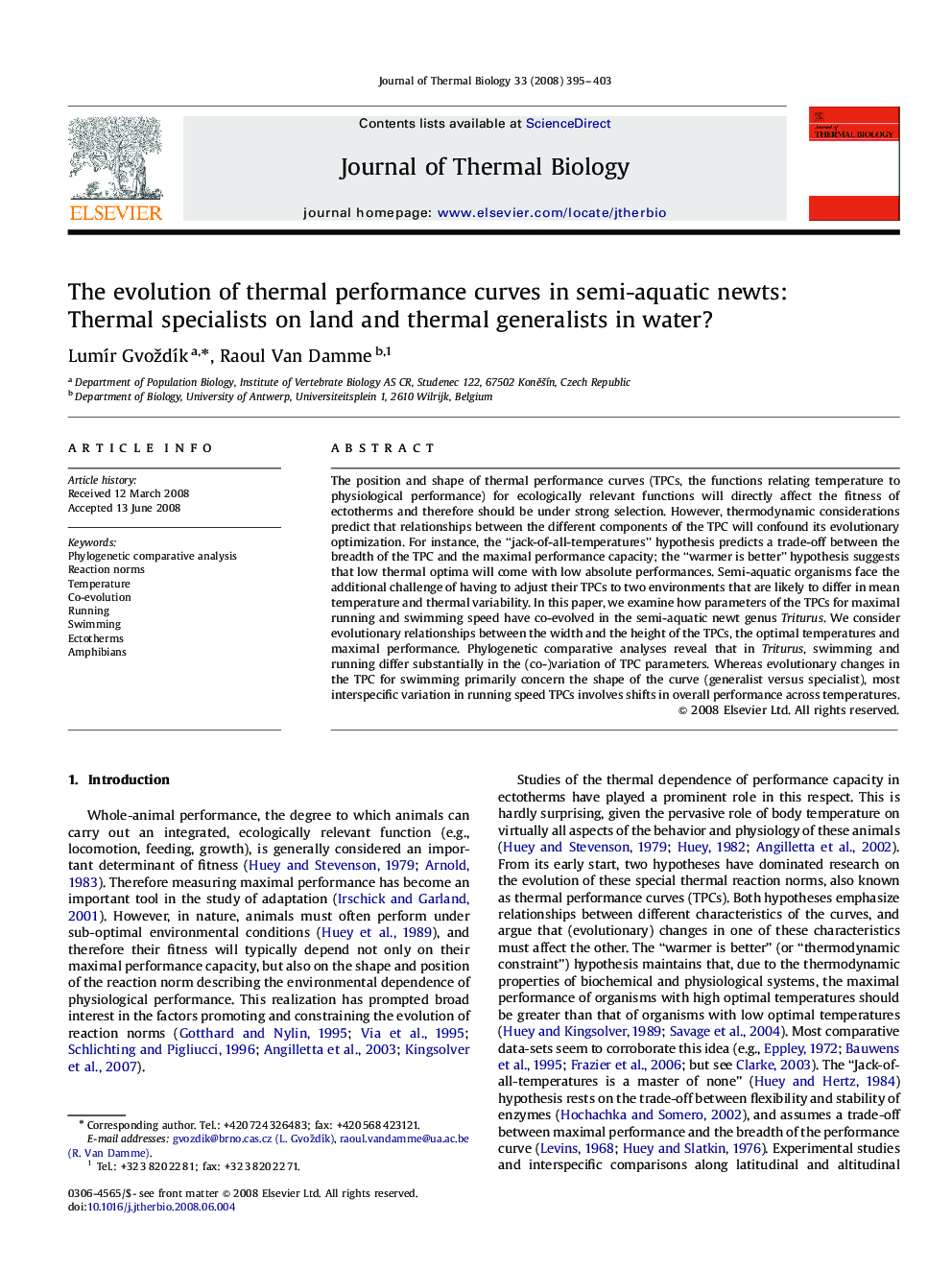| Article ID | Journal | Published Year | Pages | File Type |
|---|---|---|---|---|
| 2843601 | Journal of Thermal Biology | 2008 | 9 Pages |
The position and shape of thermal performance curves (TPCs, the functions relating temperature to physiological performance) for ecologically relevant functions will directly affect the fitness of ectotherms and therefore should be under strong selection. However, thermodynamic considerations predict that relationships between the different components of the TPC will confound its evolutionary optimization. For instance, the “jack-of-all-temperatures” hypothesis predicts a trade-off between the breadth of the TPC and the maximal performance capacity; the “warmer is better” hypothesis suggests that low thermal optima will come with low absolute performances. Semi-aquatic organisms face the additional challenge of having to adjust their TPCs to two environments that are likely to differ in mean temperature and thermal variability. In this paper, we examine how parameters of the TPCs for maximal running and swimming speed have co-evolved in the semi-aquatic newt genus Triturus. We consider evolutionary relationships between the width and the height of the TPCs, the optimal temperatures and maximal performance. Phylogenetic comparative analyses reveal that in Triturus, swimming and running differ substantially in the (co-)variation of TPC parameters. Whereas evolutionary changes in the TPC for swimming primarily concern the shape of the curve (generalist versus specialist), most interspecific variation in running speed TPCs involves shifts in overall performance across temperatures.
